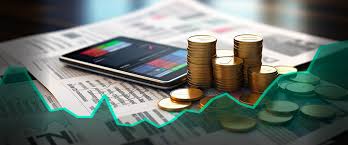CFD trading is a rapidly growing form of trading that allows traders to make profits by speculating on the price movements of underlying financial instruments. CFD stands for Contract for Difference, a form of derivative trading where the parties involved agree to exchange the difference in the price of an underlying asset from the time the contract was opened to the time it was closed. In other words, CFD trading is buying and selling financial instruments without needing to physically own them.
CFD trading offers traders a wide variety of financial markets to trade, including stocks, indices, commodities, and Forex. It is an attractive option for traders looking for higher leverage and lower transaction costs, making it a popular choice among day traders and swing traders.
As with any form of trading, understanding the market and developing analytical skills are crucial to success in CFD trading. In this blog post, we will provide an introduction to CFD trading and discuss how traders can use market analysis to maximize their profits.
cfd trading offers traders the opportunity to speculate on the price movements of various financial assets, including stocks, indices, commodities, and Forex. One of the main advantages of CFD trading is the ability to use leverage, which allows traders to control a larger position with a smaller deposit. However, leverage also comes with increased risks, and traders should always use appropriate risk management techniques to avoid large losses.
To be successful in CFD trading, it is important to have a thorough understanding of the markets and the factors that affect the price movements of various financial instruments. Fundamental analysis and technical analysis are two important tools that traders use to analyze the markets.
Fundamental analysis involves analyzing economic, financial, and other qualitative and quantitative factors that influence the price of a particular asset. These might include earnings reports, macroeconomic indicators, geopolitical events, and industry trends. Fundamental analysis is particularly useful for long-term trading strategies.
Technical analysis, on the other hand, involves analyzing charts and statistical indicators to identify trends and patterns in the price movements of an asset. Technical analysis is often used for short-term trading strategies and is useful for identifying entry and exit points for trades.
Another important element of CFD trading is risk management. Traders need to have a solid understanding of their risk appetite and be able to manage their positions effectively to avoid large losses. Effective risk management techniques might include setting stop loss orders, using trailing stops, and being aware of the potential for margin calls.
Conclusion:
CFD trading offers traders the opportunity to profit from the price movements of various financial instruments, but it is important to have a solid understanding of the markets, as well as effective risk management techniques. Fundamental analysis and technical analysis are two useful tools for analyzing the markets, and traders should be aware of their risk appetite and use appropriate risk management techniques. With careful analysis and a disciplined approach to trading, CFD trading can be a lucrative option for traders looking to maximize their profits.
